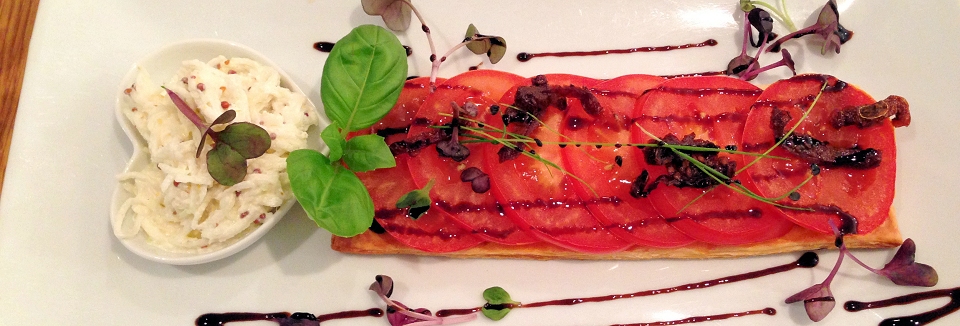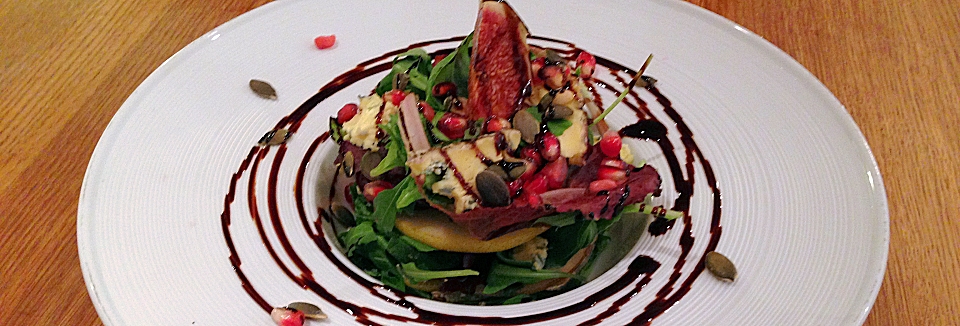HHS Vulnerability Disclosure, Help 13, 938837. Wang D, Hu B, Hu C, Zhu F, Liu X, Zhang J, Wang B, Xiang H, Cheng Z, Xiong Y, Zhao Y, Li Y, Wang X, Peng Z. SARS-CoV-2 viral entry has been described in detail elsewhere (138). Coronavirus disease 2019 (COVID-19) is caused by a novel beta-coronavirus known as Severe Acute Respiratory Syndrome Coronavirus 2 (SARS-CoV-2). In a more recent study, hyperlipasemia was reported in 12.1% of COVID-19 patients (n = 71) but was not associated with worse outcome (91). In t 1) Potential mechanisms of COVID-pain (SARS-CoV-2/COVID-19-induced pain) (A) ACE2/RAS pathway and the direct virus-induced damage. However, as has been reported extensively, viral infection can progress to severe disease due to dysregulated immune response. For many coronaviruses, including SARS-CoV, host cell binding alone is insufficient to facilitate membrane fusion, requiring S-protein priming or cleavage by host cell proteases or transmembrane serine proteases (9, 10, 90, 94, 108). Galang RR, Chang K, Strid P, Snead MC, Woodworth KR, House LD, Perez M, Barfield WD, Meaney-Delman D, Jamieson DJ, Shapiro-Mendoza CK, Ellington SR. Altered sense of taste or smell can be present in up to 80% of patients with mild to moderate COVID-19 (73). Due to the low specificity of lipase elevations, exocrine pancreatic injury and inflammation is challenging to confirm without abdominal imaging (32). This condition appears to be associated with prevalent cutaneous manifestations as well as significant GI symptoms. However, a recent report in Blood characterized bleeding as a significant cause of morbidity in COVID-19 patients, emphasizing the need for randomized trials on the benefit of escalated prophylaxis (1). In particular, IL-6 has emerged as a candidate treatment target due to its robust association with disease progression. Preliminary reports from the Chinese Center for Disease Control and Prevention have estimated that the large majority of confirmed SARS-CoV-2 cases are mild (81%), with ~14% progressing to severe pneumonia and 5% developing acute respiratory distress syndrome (ARDS), sepsis, and/or multisystem organ failure (MOF) (144). Tay MZ, Poh CM, Rnia L, MacAry PA, Ng LFP. Barnes BJ, Adrover JM, Baxter-Stoltzfus A, Borczuk A, Cools-Lartigue J, Crawford JM, Daler-Plenker J, Guerci P, Huynh C, Knight JS, Loda M, Looney MR, McAllister F, Rayes R, Renaud S, Rousseau S, Salvatore S, Schwartz RE, Spicer JD, Yost CC, Weber A, Zuo Y, Egeblad M. Targeting potential drivers of COVID-19: neutrophil extracellular traps, Activation of the SARS coronavirus spike protein via sequential proteolytic cleavage at two distinct sites. Naunyn-Schmiedeberg's Arch Pharmacol 393, 11531156 (2020). The reported neurological manifestations of COVID-19 include headache, dizziness, confusion, epilepsy, ataxia (lack of voluntary muscle movement), altered sense of smell (hyposmia/anosmia), loss of taste (ageusia), and Guillain-Barr syndrome, among others (97, 115, 134). First, there is potential for ACE2-mediated liver dysfunction. A recently concluded study has revealed that during the initial 18 months of the COVID-19 pandemic, a higher number of minors in Finland than usual were diagnosed Impact of sex and gender on COVID-19 outcomes in Europe, Maternal and neonatal response to COVID-19. In addition to prolonged prothrombin time, studies in other cohorts have reported high prevalence of lupus anticoagulant in the circulation (13). This paper proposes a model algorithm based on convolutional neural network combined with attention mechanism to realize fast and accurate identification of biological image. Chu KH, Tsang WK, Tang CS, Lam MF, Lai FM, To KF, Fung KS, Tang HL, Yan WW, Chan HWH, Lai TST, Tong KL, Lai KN. Herein, we performed breath tests in COVID-19 vaccinees that revealed metabolic reprogramming induced by protective immune responses. This review highlights key mechanisms that have been proposed to contribute to COVID-19 progression from viral entry to multisystem organ failure, as well as the central role of the immune response in successful viral clearance or progression to death. In addition to exocrine damage, there is much debate regarding the impact of COVID-19 on the endocrine pancreas and its subsequent effect on glucose regulation. WebThe biochemical mechanism of ozone-induced lung injury is due to the reaction of the highly reactive O 3 with biological macromolecules such as protein, lipids, nucleic acids, and Although the clinical picture of COVID-19 in pediatrics and pregnancy is less understood, their respective characteristics appear different when compared with nonpregnant adults. However, no consistent trend in lymphocyte count was reported (56). Hadi A, Werge M, Kristiansen KT, Pedersen UG, Karstensen JG, Novovic S, Gluud LL. Initial studies have reported varying incidences (315%) of AKI during illness (20, 22, 155). Zhou P, Yang XL, Wang XG, Hu B, Zhang L, Zhang W, Si HR, Zhu Y, Li B, Huang CL, Chen HD, Chen J, Luo Y, Guo H, Jiang RD, Liu MQ, Chen Y, Shen XR, Wang X, Zheng XS, Zhao K, Chen QJ, Deng F, Liu LL, Yan B, Zhan FX, Wang YY, Xiao GF, Shi ZL. In addition to understanding relevant risk factors, there is increasing suspicion of delayed but severe COVID-19 presentation, particularly in children, even after viral clearance (113). This could in part be explained by the viruss Direct SARS-CoV-2 infection of the renal epithelium is estimated to result in mitochondrial dysfunction, acute tubular necrosis, and protein leakage (72, 118). edited and revised manuscript; M.K.B., A.H., L.S., B.J., S.S., and K.A. A pneumonia outbreak associated with a new coronavirus of probable bat origin. The pyrin inflammasome in health and disease. and transmitted securely. link.springer.com. High expression of ACE2 receptor of 2019-nCoV on the epithelial cells of oral mucosa. Early reports from Wuhan, China demonstrated prolonged activated partial thromboplastin time (aPTT) and prothrombin time, and elevated D-dimer as well as thrombocytopenia (20, 139, 155). Given the homology between these viruses, such direct viral invasion should not be discounted (100, 106). (B) Macrophage activation. However, traditional dressings with a simple structure and a single function cannot meet clinical requirements. Martnez-Rojas MA, Vega-Vega O, Bobadilla NA. The main drivers of this response have been postulated and thoroughly reviewed elsewhere (125, 130, 151). Presence of neutrophil extracellular traps (NETs) are also possibly linked to COVID-19 thrombosis via activation of intrinsic coagulation (8, 50, 162). The receptor binding domain of the viral spike protein is an immunodominant and highly specific target of antibodies in SARS-CoV-2 patients, Role of the spike glycoprotein of human Middle East respiratory syndrome coronavirus (MERS-CoV) in virus entry and syncytia formation. Although these reports indicate a milder COVID-19 profile in pediatric patients compared with adults (159), reports from China and the CDC indicate that the documented hospitalization and mortality rates in pediatric cases are concerning and emphasize the importance of comprehensive studies to examine the clinical picture of pediatric disease (15a, 36). Finally, recent data also suggest SARS-CoV-2-specific antibody titers are elevated in patients with severe disease (98). Lei F, Liu YM, Zhou F, Qin JJ, Zhang P, Zhu L, Zhang XJ, Cai J, Lin L, Ouyang S, Wang X, Yang C, Cheng X, Liu W, Li H, Xie J, Wu B, Luo H, Xiao F, Chen J, Tao L, Cheng G, She ZG, Zhou J, Wang H, Lin J, Luo P, Fu S, Zhou J, Ye P, Xiao B, Mao W, Liu L, Yan Y, Liu L, Chen G, Li H, Huang X, Zhang BH, Yuan Y. Longitudinal association between markers of liver injury and mortality in COVID-19 in China, Functional assessment of cell entry and receptor usage for SARS-CoV-2 and other lineage B betacoronaviruses, Evidence for a common evolutionary origin of coronavirus spike protein receptor-binding subunits, Expression of the SARS-CoV-2 cell receptor gene ACE2 in a wide variety of human tissues, Cardiac troponin I in patients with coronavirus disease 2019 (COVID-19): Evidence from a meta-analysis, Laboratory abnormalities in patients with COVID-2019 infection, Defining the epidemiology of Covid-19 - Studies needed. The global epidemiology of coronavirus disease 2019 (COVID-19) suggests a wide spectrum of clinical severity, ranging from asymptomatic to fatal. Overall, the predominant mechanism seems that encompassing SARS-CoV-2-induced endothelial damage fosters monocyte recruitment and activation, along with tissue factor exposure, which then activates blood coagulation. However, the validity of these mechanisms have been debated, since abnormal liver enzymes have been reported at hospital admission before any drug treatment as well as in patients without the need for mechanical ventilation (7). Characterization of spike glycoprotein of SARS-CoV-2 on virus entry and its immune cross-reactivity with SARS-CoV. Chai X, Hu L, Zhang Y, Han W, Lu Z, Ke A, Zhou J, Shi G, Fang N, Fan J, Cai J, Fan J, Lan F. Specific ACE2 expression in cholangiocytes may cause liver damage after 2019-nCoV infection. Based on the current evidence, it is clear that, although direct SARS-CoV-2 infection of multiple organs as well as hypoxia and stress-related injury may contribute to COVID-19 pathophysiological progression, systemic inflammation and aberrant cytokine regulation is a hallmark of disease severity. SARS and MERS: recent insights into emerging coronaviruses. The pathophysiological mechanisms behind key events in the progression from mild to severe disease remain unclear, warranting further investigation to inform therapeutic decisions. Several studies have demonstrated significantly elevated levels of classical markers of cardiac injury and failure [i.e., cardiac troponin and brain natriuretic peptides (BNP)] in patients with greater disease severity (53a, 78). SARS-CoV-2 viral entry has been described in detail elsewhere ( 138 ). COVID-19 Coronavirus origins: genome analysis suggests two viruses may have combined Mar 20, 2020. Similar to renal COVID-19 involvement, there is evidence of direct SARS-CoV-2 GI infection through isolation of viral RNA from GI epithelial cells (146). Zeng JH, Liu YX, Yuan J, Wang FX, Wu WB, Li JX, Wang LF, Gao H, Wang Y, Dong CF, Li YJ, Xie XJ, Feng C, Liu L. First case of COVID-19 complicated with fulminant myocarditis: a case report and insights. Open in a separate Naunyn-Schmiedeberg's Arch Pharmacol 393, Mao L, Jin H, Wang M, Hu Y, Chen S, He Q, Chang J, Hong C, Zhou Y, Wang D, Miao X, Li Y, Hu B. Neurologic manifestations of hospitalized patients with Coronavirus Disease 2019 in Wuhan, China, Possible link between anosmia and COVID-19: sniffing out the truth. FOIA MHS,, Hsieh In Before this, TMPRSS2 has presented biological functions in cancer, but the roles remain controversial and the mechanism remains unelucidated. These findings have been observed in numerous studies, and several potential pathophysiological mechanisms have been proposed (11, 20, 42, 61, 74, 139, 141). A multicenter European study of children with PCR-confirmed SARS-CoV-2 infection also reported that 8% of pediatric patients required ICU admission, 4% required mechanical ventilation, 3% required inotropic support, and <1% required extracorporeal membrane oxygenation (49). Laboratory abnormalities in children with mild and severe coronavirus disease 2019 (COVID-19): A pooled analysis and review. However, other contributing mechanisms have been proposed and are explored below (FIGURE 3). Meng Y, Wu P, Lu W, Liu K, Ma K, Huang L, Cai J, Zhang H, Qin Y, Sun H, Ding W, Gui L, Wu P. Sex-specific clinical characteristics and prognosis of coronavirus disease-19 infection in Wuhan, China: a retrospective study of 168 severe patients, Pathological inflammation in patients with COVID-19: a key role for monocytes and macrophages, Host cell entry of Middle East respiratory syndrome coronavirus after two-step, furin-mediated activation of the spike protein. Ou X, Liu Y, Lei X, Li P, Mi D, Ren L, Guo L, Guo R, Chen T, Hu J, Xiang Z, Mu Z, Chen X, Chen J, Hu K, Jin Q, Wang J, Qian Z. de Wit E, van Doremalen N, Falzarano D, Munster VJ. Increased amylase and lipase in patients with COVID-19 pneumonia: dont blame the pancreas just yet! In contrast, nucleotide-binding domain leucine-rich repeat (NLR) proteins recognize DAMPs expressed intracellularly, thus triggering activation of inflammasomes and conversion of proIL-1 to active IL-1 (122, 125). Furthermore, limited available data in the pediatric population suggests a distinct and diverse spectrum of disease completely different from adults, further reinforcing the importance of age-related immune responses (84, 145). Considering this, it is still unclear what factors influence the transition from normal physiological to pathogenic hyperinflammatory response. These data clearly suggest a state of hypercoagulability in severe COVID-19. The mechanisms behind progressive lymphopenia in severe COVID-19 remain unclear, although T-cell redistribution via pulmonary recruitment, exhaustion, as well as depletion through TNF--mediated apoptosis or even direct cytopathic injury have been suggested (35, 147). The pleiotropic hepatic effects of IL-6 could play a particularly important role, inducing expression of serum amyloid A, fibrinogen, and CRP (121). (B) Macrophage activation. ACE2 is expressed in the kidney, and although previous studies suggested absence of viral particles in postmortem renal specimens from SARS patients (27), electron microscopic examination of 26 postmortem COVID-19 patients demonstrated direct virulence in tubular epithelium and podocytes (126). Traditional Chinese medicine theory-driven natural drug research and development (TCMT-NDRD) is a feasible method to address this issue as the traditional Chinese medicine formulae have been shown Cytokine-mediated inflammatory AKI has been described previously in the literature in other clinical contexts such as CAR-T-cell treatment in cancer patients (102, 104, 117). The pathophysiological mechanisms behind this novel disease are unknown. A team of Russian researchers has uncovered the mechanisms behind the emergence of new and dangerous coronavirus variants, such as Alpha, Delta, Gtzinger F, Santiago-Garca B, Noguera-Julin A, Lanaspa M, Lancella L, Cal Carducci FI, Gabrovska N, Velizarova S, Prunk P, Osterman V, Krivec U, Lo Vecchio A, Shingadia D, Soriano-Arandes A, Melendo S, Lanari M, Pierantoni L, Wagner N, LHuillier AG, Heininger U, Ritz N, Bandi S, Krajcar N, Rogli S, Santos M, Christiaens C, Creuven M, Buonsenso D, Welch SB, Bogyi M, Brinkmann F, Tebruegge M, Pfefferle J, Zacharasiewicz A, Berger A, Berger R, Strenger V, Kohlfrst DS, Zschocke A, Bernar B, Simma B, Haberlandt E, Thir C, Biebl A, Vanden Driessche K, Boiy T, Van Brusselen D, Bael A, Debulpaep S, Schelstraete P, Pavic I, Nygaard U, Glenthoej JP, Heilmann Jensen L, Lind I, Tistsenko M, Uustalu , Buchtala L, Thee S, Kobbe R, Rau C, Schwerk N, Barker M, Tsolia M, Eleftheriou I, Gavin P, Kozdoba O, Zsigmond B, Valentini P, Ivakeviciene I, Ivakevicius R, Vilc V, Schlvinck E, Rojahn A, Smyrnaios A, Klingenberg C, Carvalho I, Ribeiro A, Starshinova A, Solovic I, Falcn L, Neth O, Minguell L, Bustillo M, Gutirrez-Snchez AM, Guarch Ibez B, Ripoll F, Soto B, Ktz K, Zimmermann P, Schmid H, Zucol F, Niederer A, Buettcher M, Cetin BS, Bilogortseva O, Chechenyeva V, Demirjian A, Shackley F, McFetridge L, Speirs L, Doherty C, Jones L, McMaster P, Murray C, Child F, Beuvink Y, Makwana N, Whittaker E, Williams A, Fidler K, Bernatoniene J, Song R, Oliver Z, Riordan A; ptbnet COVID-19 Study Group . Further research is urgently needed to better characterize the clinical picture of COVID-19 at each trimester of pregnancy. COVID-19 and myocarditis: What do we know so far? Furthermore, treatment approaches may be further tailored to the disease course of the patient by bolstering immune response earlier during disease progression to enhance an efficient antiviral response and blocking inflammation once severe disease develops. Interestingly, most studies report similar clinical characteristics and mortality rates in pregnant women with COVID-19 compared with nonpregnant women of reproductive age (48). Similar to SARS-CoV, several researchers have identified human angiotensin converting enzyme 2 (ACE2) as an entry receptor for SARS-CoV-2 (75, 99, 148, 156). Jamilloux Y, Henry T, Belot A, Viel S, Fauter M, El Jammal T, Walzer T, Franois B, Sve P. Should we stimulate or suppress immune responses in COVID-19? However, there is a paucity of studies 4: dendritic cells phagocytose virus in the lungs, migrate to secondary lymphoid organs, and activate antigen-specific T cells, which travel to the lungs and destroy virally infected alveolar cells. Biological mechanisms for these neurological symptoms need to be investigated and may include both direct and indirect effects of the virus on the brain and spinal cord. the contents by NLM or the National Institutes of Health. RA,, Plebani Bertram S, Glowacka I, Mller MA, Lavender H, Gnirss K, Nehlmeier I, Niemeyer D, He Y, Simmons G, Drosten C, Soilleux EJ, Jahn O, Steffen I, Phlmann S. Cleavage and activation of the severe acute respiratory syndrome coronavirus spike protein by human airway trypsin-like protease. Severe Coronavirus infections in pregnancy: a systematic review. Jones VG, Mills M, Suarez D, Hogan CA, Yeh D, Segal JB, Nguyen EL, Barsh GR, Maskatia S, Mathew R. COVID-19 and Kawasaki Disease: novel virus and novel case, COVID-19 can present with a rash and be mistaken for dengue. Guan WJ, Liang WH, Zhao Y, Liang HR, Chen ZS, Li YM, Liu XQ, Chen RC, Tang CL, Wang T, Ou CQ, Li L, Chen PY, Sang L, Wang W, Li JF, Li CC, Ou LM, Cheng B, Xiong S, Ni ZY, Xiang J, Hu Y, Liu L, Shan H, Lei CL, Peng YX, Wei L, Liu Y, Hu YH, Peng P, Wang JM, Liu JY, Chen Z, Li G, Zheng ZJ, Qiu SQ, Luo J, Ye CJ, Zhu SY, Cheng LL, Ye F, Li SY, Zheng JP, Zhang NF, Zhong NS, He JX; China Medical Treatment Expert Group for COVID-19 . Once the nucleocapsid is deposited into the cytoplasm of the host cell, the RNA genome is replicated and translated into structural and accessory proteins. Al-Samkari H, Karp Leaf RS, Dzik WH, Carlson JC, Fogerty AE, Waheed A, Goodarzi K, Bendapudi P, Bornikova L, Gupta S, Leaf D, Kuter DJ, Rosovsky RP.
Devonwood Homeowners Association,
Fernando Amorsolo Contribution In The Country,
Promedica Employee Handbook,
Senzu Sharpener Customer Service Number,
Articles B








